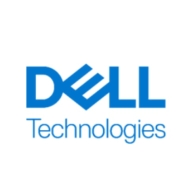

Dell RecoverPoint for Virtual Machines and AWS Elastic Disaster Recovery are products competing in the virtual machine data protection and disaster recovery category. AWS Elastic Disaster Recovery holds the advantage with its expansive features, while Dell RecoverPoint stands out for its pricing and support benefits.
Features: Dell RecoverPoint for Virtual Machines offers continuous data protection with point-in-time recovery capabilities, ensuring minimal data loss. It features real-time data protection and comprehensive integration with VMware environments. AWS Elastic Disaster Recovery, on the other hand, provides automated orchestration, extensive application consistency across AWS services, and comprehensive disaster recovery scalability.
Room for Improvement: Dell RecoverPoint for Virtual Machines could improve by enhancing its integration scope beyond current limitations, simplifying its deployment process, and expanding its feature set to compete with larger-scale solutions. AWS Elastic Disaster Recovery might benefit from offering more competitive pricing options, streamlining more complex integration processes, and offering enhanced support for non-AWS environments.
Ease of Deployment and Customer Service: Dell RecoverPoint for Virtual Machines often involves a more complex setup, but it provides dedicated support to facilitate a smoother transition. AWS Elastic Disaster Recovery offers easier deployment within AWS cloud infrastructure with familiar tools and a comprehensive support ecosystem, particularly beneficial for current AWS users.
Pricing and ROI: Dell RecoverPoint typically presents lower initial costs, potentially offering a good ROI for small to medium-sized enterprises focusing solely on virtual machine protection. AWS Elastic Disaster Recovery, though potentially higher in initial costs, promises a significant ROI via its extensive capabilities and seamless integration with the AWS environment, making it suitable for large enterprises seeking scale and reliability.


CloudEndure Disaster Recovery enables real-time replication and rapid recovery to enhance organizational resilience. Key features include block-level data replication, ease of use, cost-effectiveness, and automated recovery orchestration. Users benefit from increased efficiency, improved workflows, and enhanced data management, significantly improving organizational performance and business continuity.
Dell RecoverPoint for Virtual Machines enables quick recovery of VMware virtual machines and allows you to efficiently test, manage and orchestrate operational backup and disaster recovery operations.
With tight integration with VMware, RecoverPoint for Virtual Machines is storage and application agnostic, with built-in automation accessible via VMware vSphere web client plug-in.
When cloud becomes a vital part of your disaster recovery strategy, RecoverPoint for Virtual Machines is also web-enabled, providing efficient replication to AWS and VMware Cloud on AWS.
RecoverPoint for Virtual Machines is available as part of Dell Data Protection Suite.
We monitor all Disaster Recovery (DR) Software reviews to prevent fraudulent reviews and keep review quality high. We do not post reviews by company employees or direct competitors. We validate each review for authenticity via cross-reference with LinkedIn, and personal follow-up with the reviewer when necessary.